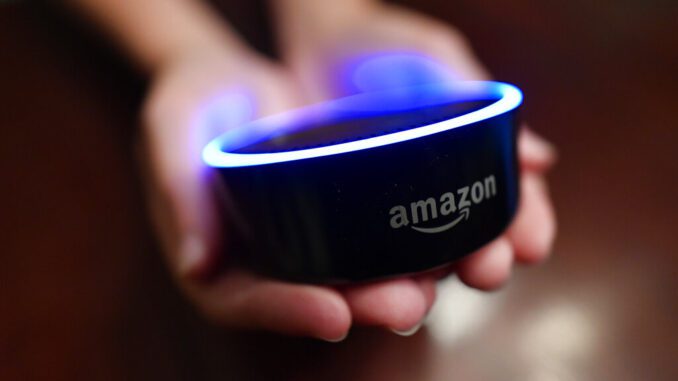
From what you buy online, to how you remember tasks, to when you monitor your doorstep, Amazon is seemingly everywhere.
And it appears the company doesn’t want to halt its reach anytime soon. In recent weeks, Amazon has said it will spend billions of dollars in two gigantic acquisitions that, if approved, will broaden its ever growing presence in the lives of consumers.
This time, the company is targeting two areas: health care, through its $3.9 billion buyout of the primary care company One Medical, and the “smart home,” where it plans to expand its already mighty presence through a $1.7 billion merger with iRobot, the maker of the popular robotic Roomba vacuum.
Perhaps unsurprisingly for a company known for its vast collection of consumer information, both mergers have heightened enduring privacy concerns about how Amazon gathers data and what it does with it. The latest line of Roombas, for example, employ sensors that map and remember a home’s floor plan.
“It’s acquiring this vast set of data that Roomba collects about people’s homes,” said Ron Knox, an Amazon critic who works for the anti-monopoly group Institute for Local Self-Reliance. “Its obvious intent, through all the other products that it sells to consumers, is to be in your home. (And) along with the privacy issues come the antitrust issues, because it’s buying market share.”
Amazon’s reach goes well beyond that. Some estimates show the retail giant controls roughly 38% of the U.S. e-commerce market, allowing it to gather granular data about the shopping preferences of millions of Americans and more worldwide. Meanwhile, its Echo devices, which house the voice assistant Alexa, have dominated the U.S. smart speaker market, accounting for roughly 70% of sales, according to estimates by Consumer Intelligence Research Partners.
Ring, which Amazon purchased in 2018 for $1 billion, monitors doorsteps and helps police track down crime — even when users might not be aware. And at select Amazon stores and Whole Foods, the company is testing a palm-scanning technology that allows customers to pay for items by storing biometric data in the cloud, sparking concerns about risks of a data breach, which Amazon has attempted to assuage.
“We treat your palm signature just like other highly sensitive personal data and keep it safe using best-in-class technical and physical security controls,” the company said on a website that provides information about the technology.
Even consumers who actively avoid Amazon are still likely to have little say about how their employers power their computer networks, which Amazon — along with Google — has long dominated through its cloud-computing service AWS.
“It’s hard to think of another organization that has as many touch points as Amazon does to an individual,” said Ian Greenblatt, who heads up tech research at the consumer research and data analytics firm J.D. Power. “It’s almost overwhelming, and it’s hard to put a finger on it.”
And Amazon — like any company — aims to grow. In the past few years, the company has purchased the Wi-Fi startup Eero and partnered with the construction company Lennar to offer tech-powered houses. With iRobot, it would gain one more building block for the ultimate smart home — and, of course, more data.
Customers can opt out of having iRobot devices store a layout of their homes, according to the vacuum maker. But data privacy advocates worry the merger is another way Amazon could suck up information to integrate into its other devices or use to target consumers with ads.
In a statement, Amazon spokesperson Lisa Levandowski denied that’s what the company wants to do.
“We do not use home maps for targeted advertising and have no plans to do so,” Levandowski said.
Whether that will relieve concerns is another matter, especially in light of research about Amazon’s other devices. Earlier this year, a group of university researchers released a report that found voice data from Amazon’s Echo devices are used to target ads to consumers — something the company had denied in the past.
Levandowski said consumers can opt out of receiving “interest-based” ads by adjusting their preferences on Amazon’s advertising preferences page. She also said Amazon doesn’t share Alexa requests with advertising networks.
Amazon’s One Medical deal, for instance, has sparked questions about how the company would handle personal health data that would fall into its lap.
Should the deal close, Levandowski said customers’ health information will be handled separately from all other Amazon businesses. She also added Amazon wouldn’t share personal health information outside of One Medical for “advertising or marketing purposes of other Amazon products and services without clear permission from the customer.”
But Lucia Savage, a chief privacy officer at the chronic care provider Omada Health, said that doesn’t mean One Medical wouldn’t be able to get data from other arms of Amazon’s business that could help it better profile its patients. The information just has to flow one way, she said.
For companies like Amazon, data collection is for more than just data’s sake, noted Kristen Martin, a professor of technology ethics at the University of Notre Dame.
“You can almost see them just trying to paint a broader picture of an individual,” Martin said. “It’s about the inferences that they’re able to draw about you specifically, and then you compared to other people.”


